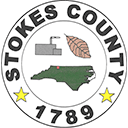Don’t Forget About Lime
go.ncsu.edu/readext?828725
en Español / em Português
El inglés es el idioma de control de esta página. En la medida en que haya algún conflicto entre la traducción al inglés y la traducción, el inglés prevalece.
Al hacer clic en el enlace de traducción se activa un servicio de traducción gratuito para convertir la página al español. Al igual que con cualquier traducción por Internet, la conversión no es sensible al contexto y puede que no traduzca el texto en su significado original. NC State Extension no garantiza la exactitud del texto traducido. Por favor, tenga en cuenta que algunas aplicaciones y/o servicios pueden no funcionar como se espera cuando se traducen.
Português
Inglês é o idioma de controle desta página. Na medida que haja algum conflito entre o texto original em Inglês e a tradução, o Inglês prevalece.
Ao clicar no link de tradução, um serviço gratuito de tradução será ativado para converter a página para o Português. Como em qualquer tradução pela internet, a conversão não é sensivel ao contexto e pode não ocorrer a tradução para o significado orginal. O serviço de Extensão da Carolina do Norte (NC State Extension) não garante a exatidão do texto traduzido. Por favor, observe que algumas funções ou serviços podem não funcionar como esperado após a tradução.
English
English is the controlling language of this page. To the extent there is any conflict between the English text and the translation, English controls.
Clicking on the translation link activates a free translation service to convert the page to Spanish. As with any Internet translation, the conversion is not context-sensitive and may not translate the text to its original meaning. NC State Extension does not guarantee the accuracy of the translated text. Please note that some applications and/or services may not function as expected when translated.
Collapse ▲Soil fertility is critical to any forage-based livestock operation. Without proper nutrient availability to forage plants, they cannot grow, and will not produce sufficient feed for livestock.
Nutrient availability is largely dependent on soil pH, or soil acidity levels. The pH index 0-14, with 0 being the most acidic, 14 being the least (AKA basic), and 7 considered neutral. For tall fescue and orchardgrass production, a pH range of 5.7-6.5 is generally considered ideal. Macronutrients, or the “big three” (Nitrogen, Phosphorus, and Potassium) required for plant growth, are much less available for plant use outside of this pH range. Other nutrients are also most available in this pH range as well. Research has described greater tall fescue and orchardgrass root mass and plant size, as well as quicker establishment in soils with correct pH than those with a pH outside of the ideal range. Not only does improved nutrient bioavailability increase plant growth, but it also prevents nutrient leaching, which can be harmful to the environment.
In the Southeast, unamended soils typically fall below the ideal pH range above, with some being as low as 4.0. This is especially true for red clay soils found in Stokes County. Soil pH is amended through lime application, which is ground limestone. Lime is one of the most economical soil amendments and arguably the most important, as fertilizer applied to soil with a low pH is not available for plant use. Because of this, soil testing, and lime application if recommended, are the first steps to successful pasture renovation, rejuvenation, or even maintenance. Soil testing is always recommended prior to applying any soil amendments to prevent over or under application, and the resulting loss of profit. Fall is a great time to apply lime, as it will have plenty of time to be effective before the onset of spring forage growth.
Questions about lime application, or anything else? Contact N.C. Cooperative Extension in Stokes County at 336-593-8179
You can also learn more about liming at this Noble Foundation publication.




